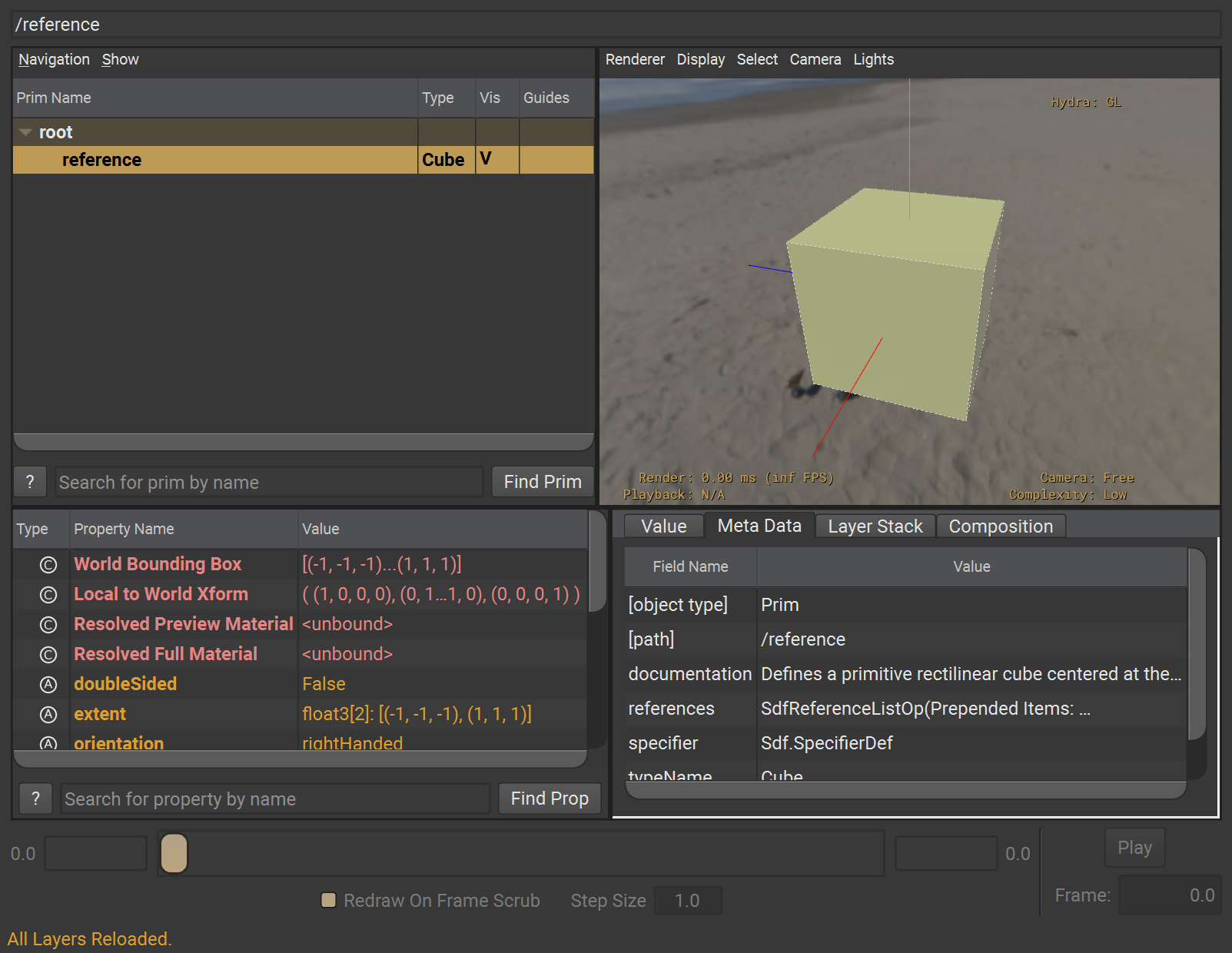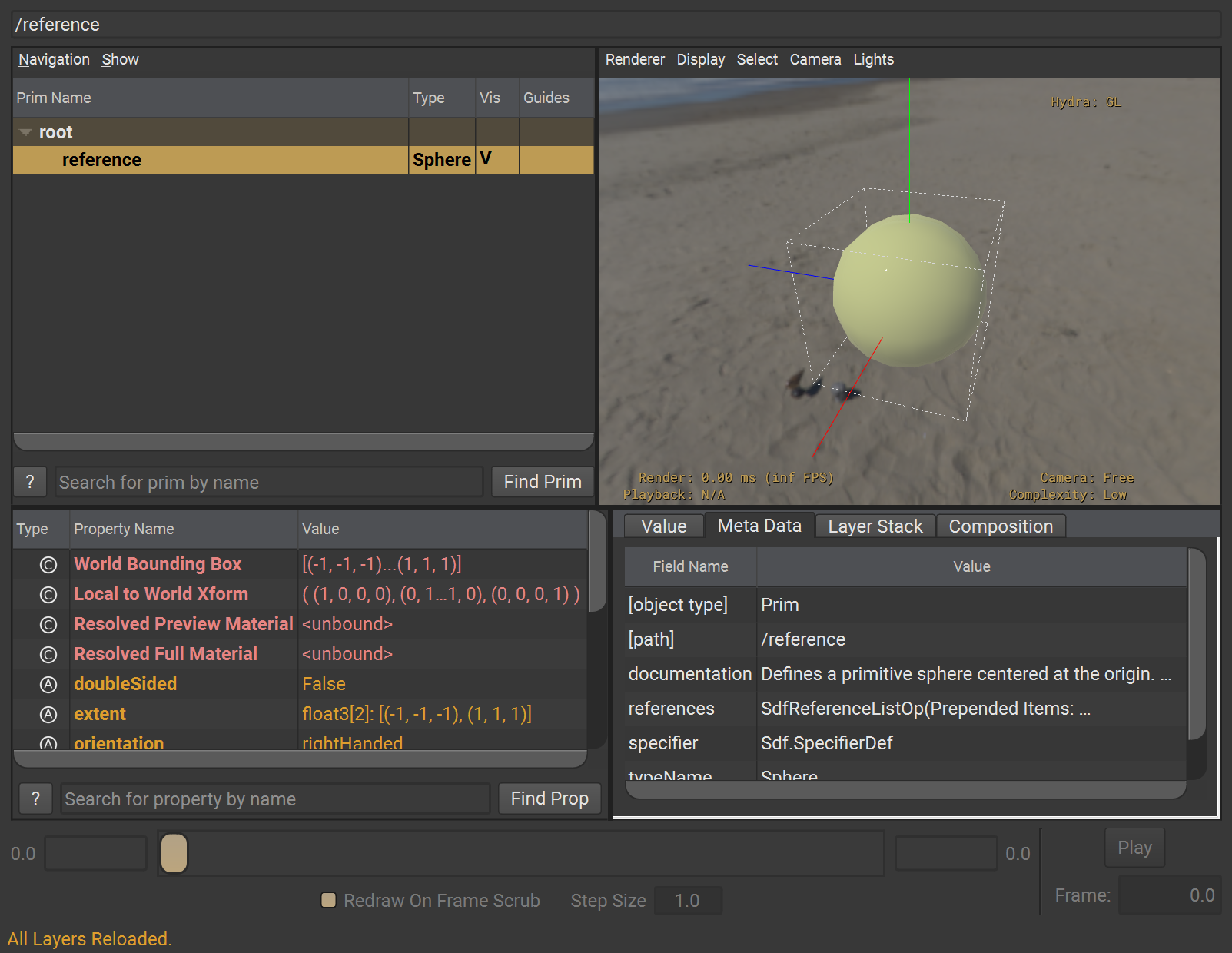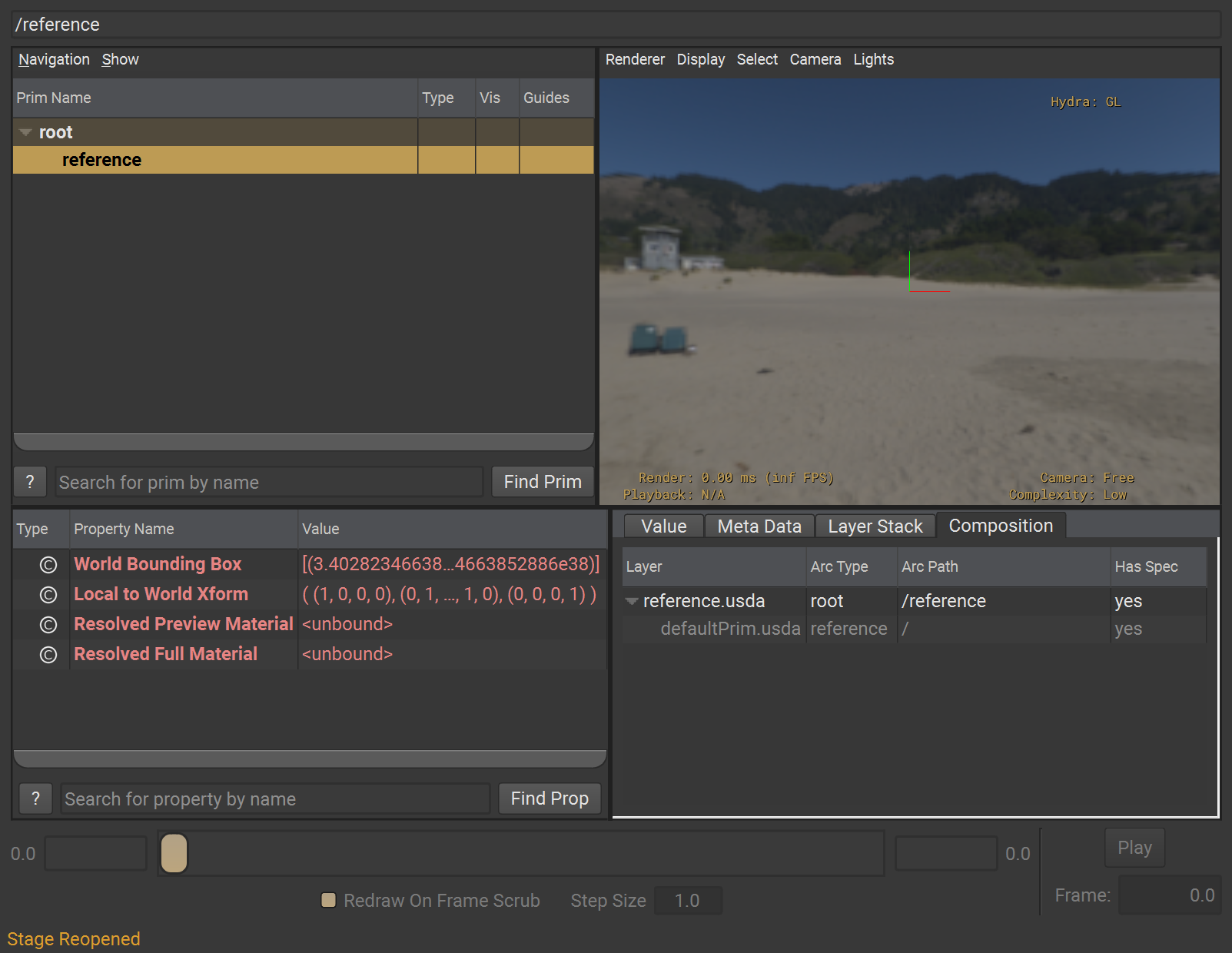Default Prim
When authoring a layer, it is possible to also define a “default prim” for it. This is a layer metadatum that contains the name of the prim that should be used automatically when the layer is used in a reference or payload composition arc without an explicit prim path.
This name must point to a root level prim, meaning a direct child of the PseudoRoot. Therefore, it is not allowed to point to a path.
#usda 1.0
(
defaultPrim = "PrimName/NestedPrim"
)
def "PrimName" {
def "NestedPrim" {}
}
If defaultPrim has not been explicitly authored, USD will trigger a “unresolved reference prim path” warning and the target layer will not compose correctly.
Warning: ... In </reference>: Unresolved reference prim path @.../defaultPrim.usda@<defaultPrim> ...
It is recommended to always specify defaultPrim on layers that will be used as references or payloads
Example
Let’s take a look at a very simple example case. There are two layers, one that defines multiple prims at its root (defaultPrim.usda), and one that references it (reference.usda).
#usda 1.0
(
defaultPrim = "CubePrim"
)
def Cube "CubePrim" {}
def Sphere "SpherePrim" {}
def Cone "ConePrim" {}
Do note that reference.usda only references the layer itself and does not specify a particular prim to reference in from defaultPrim.usda
When opening the reference.usda layer inside a usdview stage, we see that only one prim is brought into its Layer Stack, and that is the Cube.

When changing the default prim metadatum to for example defaultPrim = "SpherePrim", the Sphere will now be referenced in instead.

Removing the defaultPrim metadatum altogether will yield an empty reference arc. The layer itself is still referenced, but none of the prims in it are composed.

↪ No USD Glossary Entry!